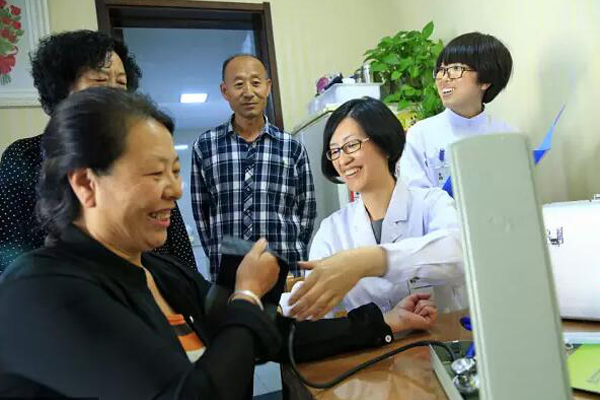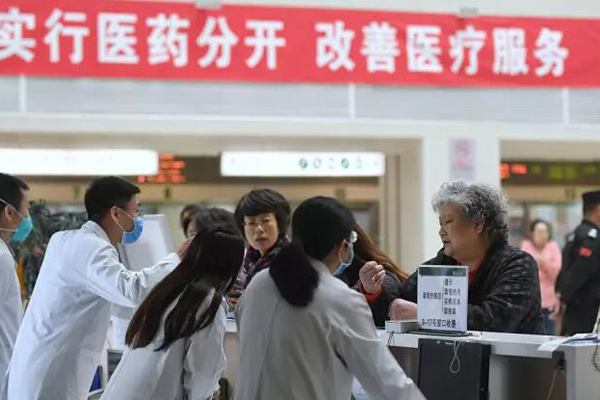Premier Li Keqiang has said, “Medical reform should respond to people’s top concerns.” In the first half of 2017, several healthcare reform policies were issued, aimed at making healthcare service more convenient and affordable.
Make healthcare more convenient

Build ‘medical partnerships’
The State Council decided to promote medical treatment partnerships, a major step and institutional innovation in the ongoing medical reform, according to a circular issued in April.
A basic framework for medical partnerships will be established with trials rolling out nationwide this year. Top public hospitals are asked to lead the partnerships, with their expert teams and medical resources being shared with grassroots medical institutions within the partnerships.
According to the circular, every city in the pilot provinces should build an effective medical partnership.
Details: >> State Council promotes medical treatment partnerships
Encourage private sector to provide healthcare services
The State Council issued a circular to encourage private healthcare services, in an attempt to meet people’s growing diversified demands in healthcare.
It states a target of setting up a number of competitive and quality private healthcare institutions and cultivating several influential healthcare industry clusters by 2020.
Details:>> China to further support private healthcare services
Extend family doctor service
Family doctor service will be extended in 2017, according to a circular issued in May. It should cover over 85 percent of Chinese cities, 30 percent of the urban population and over 60 percent of priority groups.
Priority groups are seniors, pregnant women, children, the disabled, patients with chronic diseases such as hypertension, diabetes and tuberculosis, as well as those with severe mental disorders.
Details: >> China to extend family doctor services to more cities in 2017
Make healthcare more affordable

Increase subsidy for health insurance
The government subsidy for health insurance will be increased by 30 yuan per capita in 2017, to 450 yuan per person every year, according to a circular jointly issued by the Ministry of Human Resources and Social Security and the Ministry of Finance in April.
Reform medical insurance payment system
In June, the State Council released a guideline on medical insurance payment reform, promoting diversified payment methods, especially payments based on different diseases.
It also urged strengthening the management of medical insurance funds and encouraged the trial of payments based on Diagnosis-Related Group system (DRGs).
Details:>> China to expand medical insurance payment reform
More health insurance accounts can be settled off-site
In April, the National Health and Family Planning Commission issued a circular ordering all provincial governments to launch the off-site health insurance settlement system by the end of June, which means that patients can settle their medical expenses from different places, instead of bringing them back to where their insurance plans are registered.
According to the official data, by July 21, 31 provincial-level regions and the Xinjiang Production and Construction Corps were wholly or partly connected to the system.
More subsidy for poor residents with severe illness
In February, a circular was released by six ministries and commissions under the State Council expanding subsidies and help to registered poor residents with severe illness, as an additional measure to the critical disease insurance.
Extremely poor people with severe illness will have their expenses fully financed by the government.
Reform on medicine

Cancel drug price markups
By Sept 30, all public hospitals should cancel drug price markups, except for Chinese herbal medicine, as an integral part of public hospital reform, according to a circular released jointly by seven government departments.
Details:>> Public hospitals told to end drug markups
Reform on drug production, distribution
In February, the State Council released a guideline to reform the drug production and distribution system, aimed at better satisfying people’s medical and treatment needs and promoting a healthy China.
It urged streamlining medicine approvals and prioritizing those for rare diseases, children, the elderly and emergencies.
Details:>> State Council issues guideline to further reform on drug production, distribution
Enhance supply of scarce drugs
By the end of 2017, an information collection and analysis mechanism for drugs that are in short supply should be set up, and the alert system should be improved, according to a circular issued in June.
A national platform to ensure the supply of drugs should be set up based on big data.
